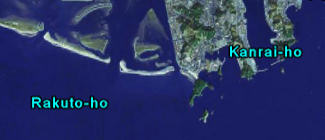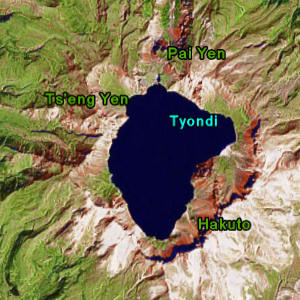Remnants of Colonial Japan in Google Earth
Posted by Wesley on
"Rakuto-ho" and "Kainrai-ho"?
While looking back at the confluence region I visited with Google Earth, some disturbing things caught my eyes again.
Kanrai-ho, Rakuto-ho
Something was amiss, I thought... and then I realized these were what Japanese would call the areas.
Actually, Kanrai-ho is "Gamcheon-po" and Rakuto-ho is "Rakdong-po(Nakdong-po)". I don't think Google Earth intended these mistakes, but rather there's a website that has the geographical data entered this way. The geographic feature itself follows the Japanese spellings while the political location follows the outdated Korean romanization spellings.
Perhaps these old Japanese names are from the Japanese colonial times (1910-1945, Japan annexed Korea during the period) and somehow they were passed down to the current times.
So how is mount Baekdu labeled?

Mount Baekdu: "Hakuto" or "Pai Yen"?
The Chinese spelling "Pai Yen" and Japanese spelling "Hakuto" are there, but "Baekdu" or even the outdated spelling of "Paekdu" are nowhere to be found. Considering the website I checked previously, I believe there may be a lot more examples like this.
I read a while ago that people had Google Earth update the names of the major cities to the current version, but it looks like the problem runs much deeper. Where do we have to start?